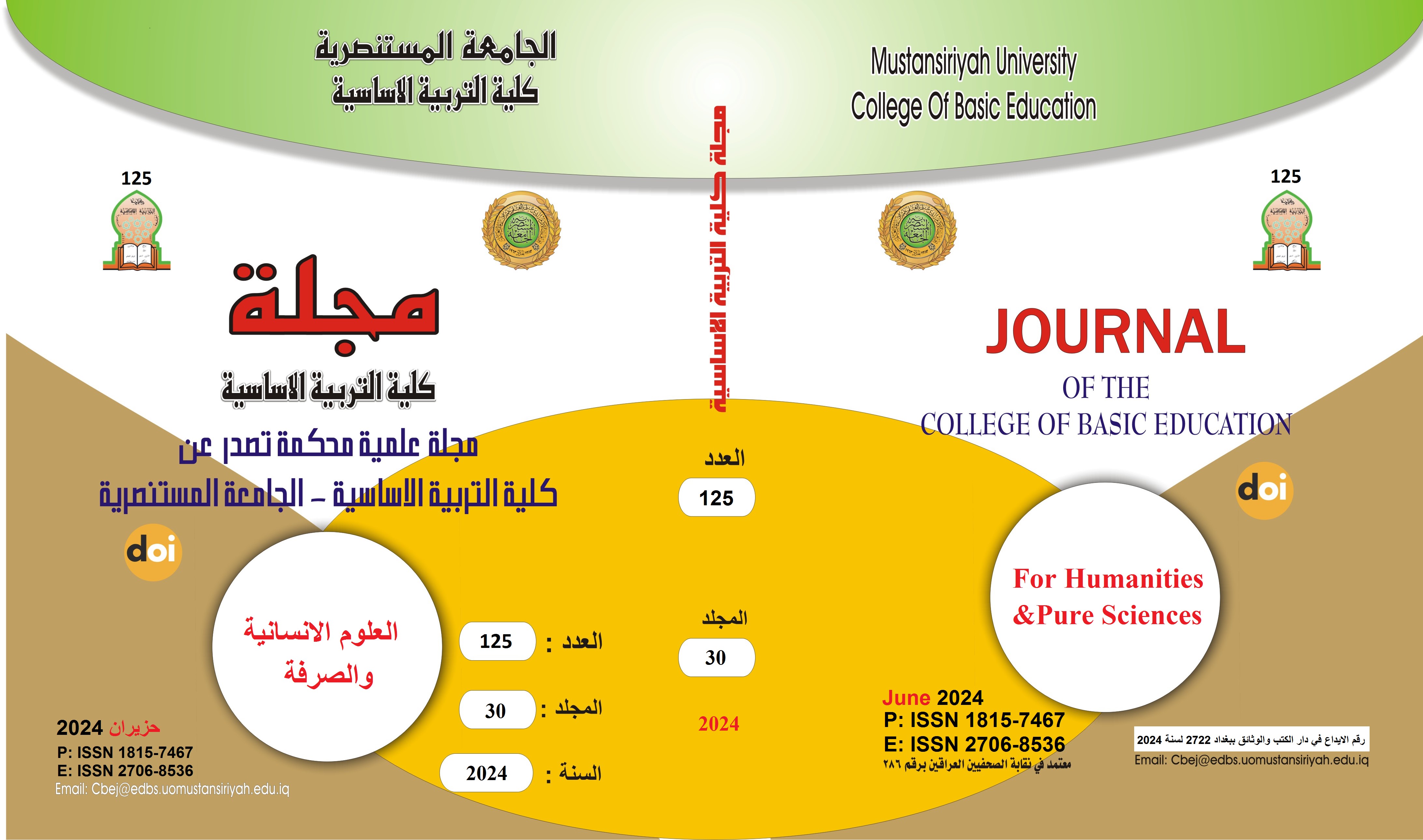أثر استراتيجية التفويض في تحصيل مادة قواعد اللغة العربية عند تلاميذ الصف الخامس الابتدائي
Main Article Content
Abstract
This research aims to identify “the effect of the delegation strategy on the acquisition of Arabic grammar among fifth-grade primary school students.”
To achieve the research goal, the researcher developed the following null hypothesis:
There is no statistically significant difference at the level of significance ) between the average scores of the experimental group students who will study the Arabic grammar subject according to the delegation strategy, and the average scores of the control group students who will study the subject according to the normal method in the post-achievement test.
The researcher followed the experimental approach, adopting an experimental design with partial control, which is the design of the experimental and control groups with a post-test, as it was more appropriate for his research procedures.
This research is limited to students in the fifth grade of primary school in the governmental day primary schools for boys affiliated with the General Directorate of Education of Baghdad Governorate/Al-Rusafa II. The researcher intentionally chose Al-Namareq Primary School and two sections of it were randomly selected to represent the research sample.
The size of the research sample was students divided into two groups: Division (A), which represents the experimental group whose students will study Arabic grammar topics according to the delegation strategy. The number of its members was 30 students, and Division (B), which represents the control group whose students will study. The subjects were the same according to the usual method, and the number of its members reached (30) students.
Before starting the experiment, the researcher rewarded the students of the two research groups on the following variables: the chronological age of the students calculated in months, the grades of the Arabic language subject for the previous academic year, the academic achievement of the parents, and the Raven’s intelligence scores test.
After determining the scientific material that will be taught to the students of the two research groups during the application of the experiment represented by the six grammar topics from the Arabic language grammar book scheduled to be taught to the students of the fifth grade of primary school for the academic year AD.
The researcher formulated behavioral objectives in light of the general objectives and the content of the renewed topics, distributed among the three levels of Bloom’s classification (knowledge, understanding, and application). They were presented to a group of experts and specialists in the Arabic language and its teaching methods, measurement, and evaluation.
Based on the above, the researcher prepared teaching plans in light of the content of the specific topics and behavioral objectives formulated according to the delegation strategy for the experimental group, and according to the usual method for the control group. For the purpose of implementing the experiment, the same researcher studied the two research groups throughout the duration of the experiment, and at the end of the experiment the researcher applied the post-achievement test consisting multiple-choice items were administered to both research groups after ensuring its validity and reliability.
To treat the data statistically, the researcher used the following statistical methods: the t-test for two independent samples, the chi-square and the Samir Nouf test to ensure the normal distribution of the two groups, and Levene to determine the homogeneity of the two research groups, the correctness and discrimination coefficient of the test items and the effectiveness of False alternatives, the Keuder-Richardson equation , and the Eta equation. The results of the research were as follows:
“The students of the experimental group outperformed the students of the control group in the post-achievement test.”
Article Details

This work is licensed under a Creative Commons Attribution-ShareAlike 4.0 International License.
